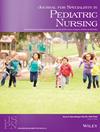Utilizing high-fidelity simulation to improve newly licensed pediatric intensive care unit nurses' experiences with end-of-life care
Abstract
Purpose
New pediatric intensive care unit (PICU) nurses face distinct challenges in transitioning from the protected world of academia to postlicensure clinical practice; one of their greatest challenges is how to support children and their caregivers at the end-of-life (EOL). The purpose of this quality improvement project was to create, implement, and assess the efficacy of a high-fidelity EOL simulation, utilizing the “Debriefing with Good Judgment” debriefing model.
Design and methods
Participants were nurses with 4 years or less of PICU experience from a 404-bed quaternary care, free-standing children's hospital in the northeastern United States. Data were collected with the Simulation Effectiveness Tool-Modified (SET-M) and the PICU EOL Simulation Evaluation Survey.
Results
Twenty-four nurses participated; the majority (54%) were 25–29 years of age. The SET-M results indicate that the EOL simulation was beneficial to their learning and increased nurse confidence in delivering EOL care. Responding to the EOL Simulation Survey, participants rated high levels of confidence with tasks such as utilizing unit and hospital-based supports, self-care, ability to listen and support families, and medicating their patients at the EOL.
Practice implications
This high-fidelity EOL simulation is a robust teaching tool that serves to support the unmet needs of the PICU nurses who care for dying children. Nurse participants had a unique opportunity to practice procedural and communication skills without risk for patient or family harm. Findings from this project can serve to guide curriculum changes at the undergraduate level as well as provide direction for new nurse orientation classes.

 求助内容:
求助内容: 应助结果提醒方式:
应助结果提醒方式:


